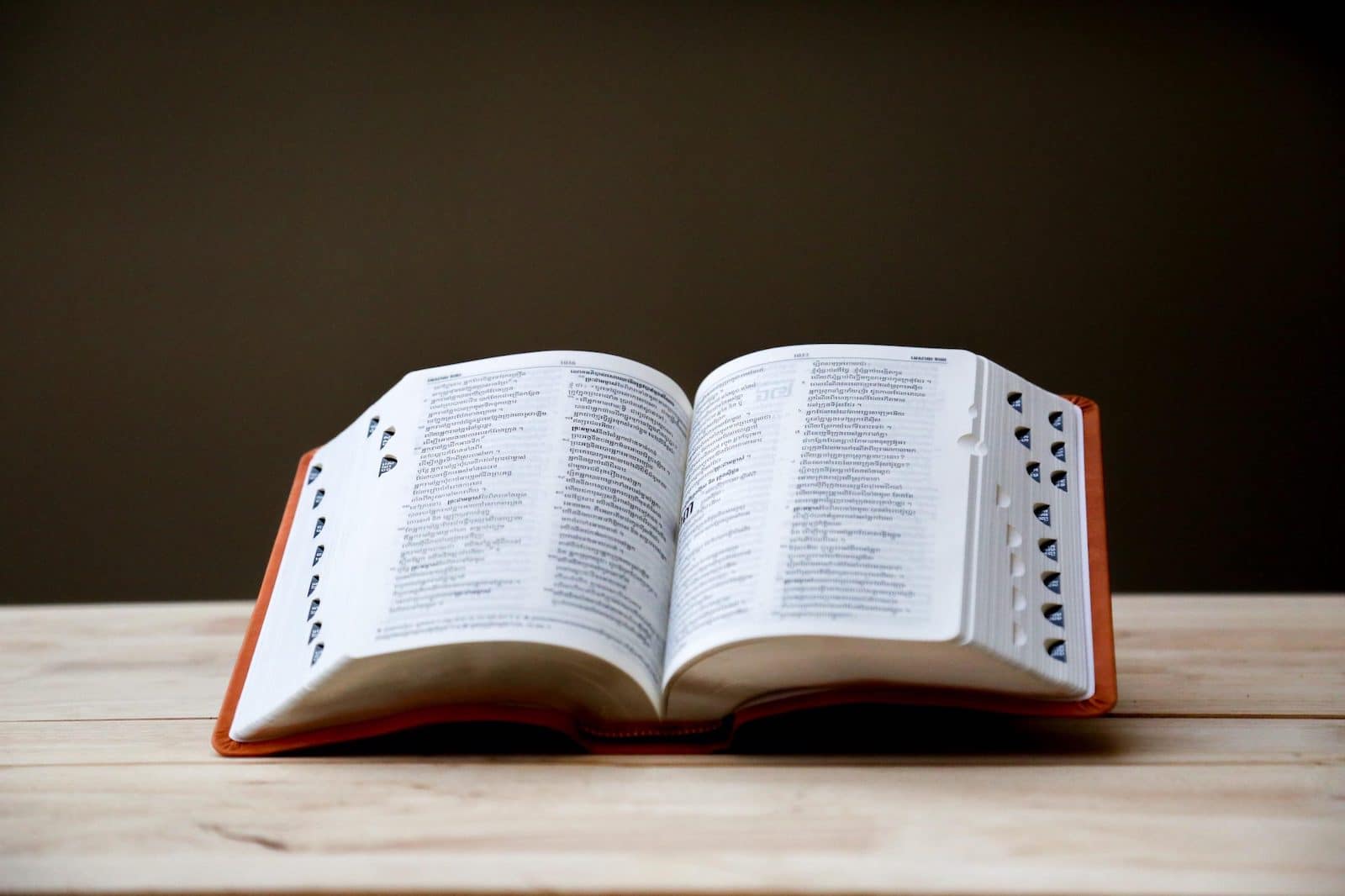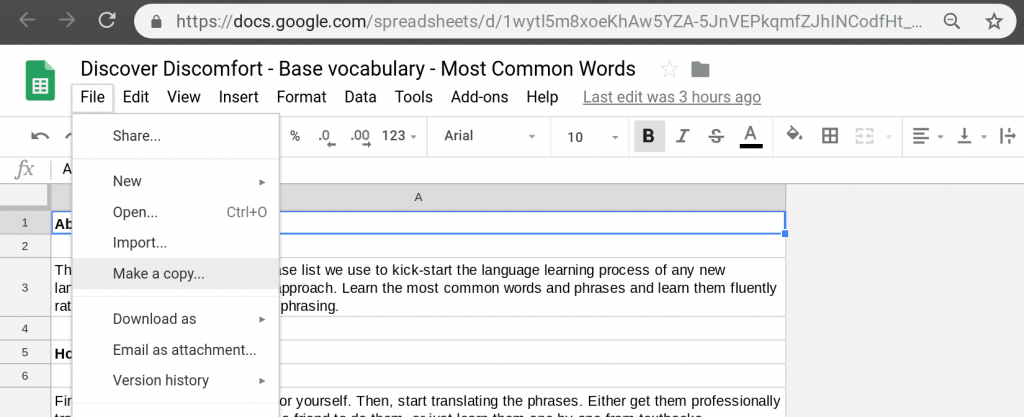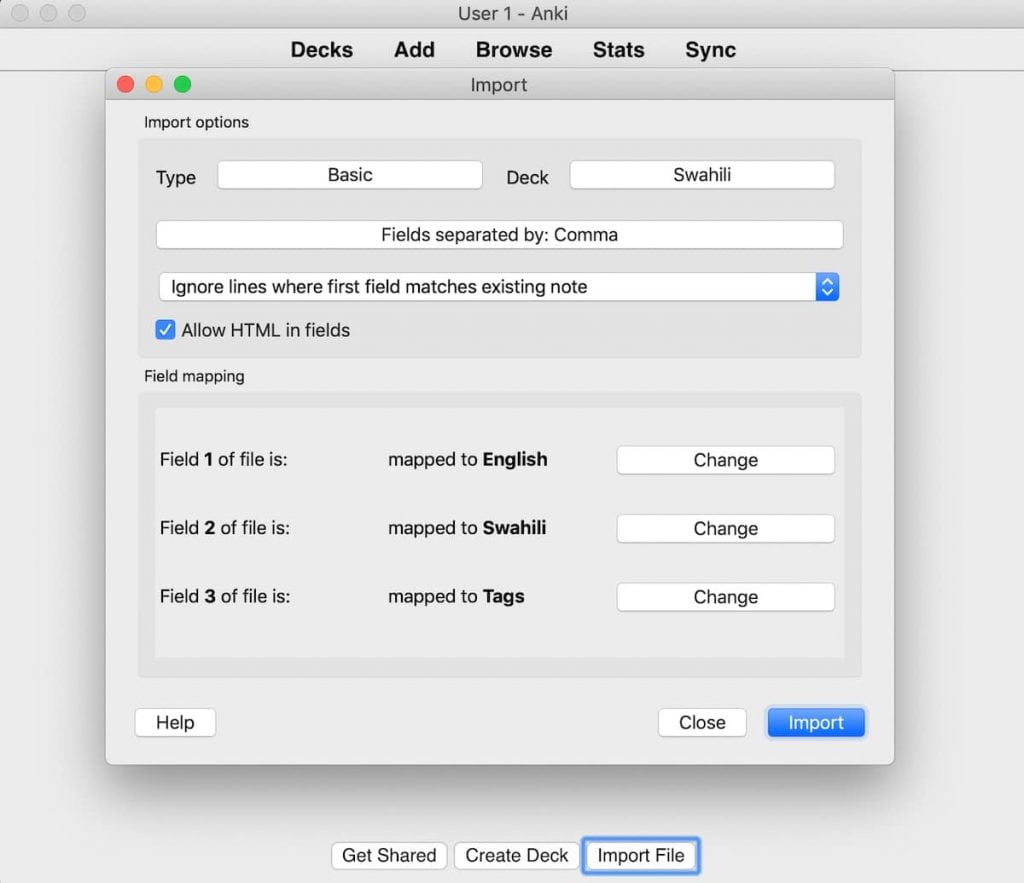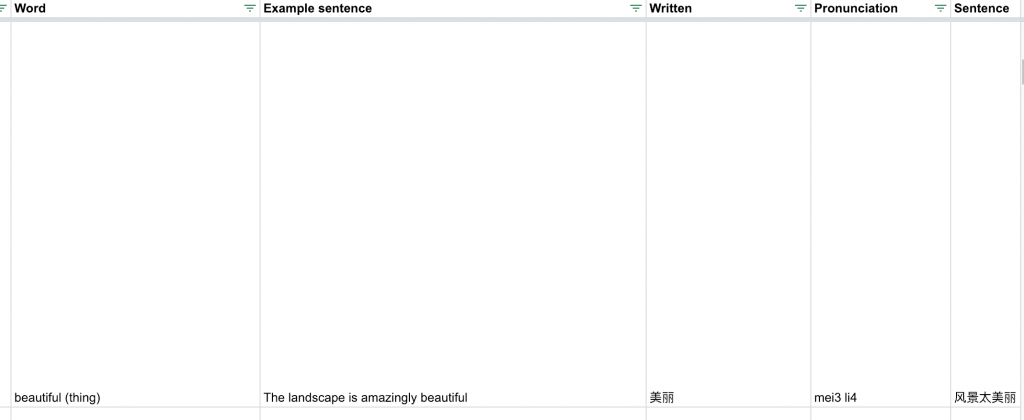This is the guide to using our optimised 80-20 vocabulary list!
We use this vocabulary and sentence list to learn any language more efficiently and more quickly. We make updates to this as we learn languages too, and will let you know when it’s updated.

See below for instructions on how to use the word list.
Get the Vocabulary List
Sign up to our email list and we’ll send you the link to the list plus updates on the list. You’ll also receive periodic updates to our blog (about once a month), all on language learning and cultural exploration.
Make a Copy in Google Sheets (Or Download It, to Use in Excel)
Step one is to make your own copy. It’s no use to you as just a list of words in English. In Google Sheets, you do this from the File menu. You can also download it and import it into Excel or Apple Numbers.

Customise the List for Your Language (And You)
We want to draw your attention to a few things that need customising for every language. We do this ourselves but have tried to keep this list fairly generic for your purposes.
- Pronouns: Words like “I”, “This” and “We” change in every language. They also change depending on how they’re used (direct object, subject, indirect object etc.). In some languages, there are words used that don’t exist in other ones (like the plural of “you” in most languages other than English). You need to customise this section according to each language.
- Numbers: In many languages, you need to count up to millions to be able to deal with currencies. In some languages, ordinal numbers are different (e.g. first, second vs. one, two), but in some languages they’re the same (or with the addition of a word). Customise this section accordingly.
- Currencies: People talk about money in many different ways. Euros have cents that are frequently used, whereas in Taiwan the dollars never break into cents (in everyday use). People might commonly say “bucks” or something equivalent. Customise!
- Phrases & formality: Some languages have tiered formality systems, like Korean, French and Persian, while some do but with regional variations, like Spanish. There may be a local “Hi” and there may not be.
Note: you don’t have to categorise all the words you learn! Sometimes this can be a hindrance. I do it with some languages, but not all, and not all in one shot.
Make Your Own Translations — With a Teacher, or a Dictionary
The reason the translations are not filled out (except for examples) is you should do many of the translations yourself.
The ways in which we make translations for things we want to say are
- With Google Translate, of course. Bear in mind that this can over-simplify grammar, and it often won’t teach you the most common way of saying things, preferring the correct translation. (See more on learning languages with Google Translate).
- With an AI tool like OpenAI’s ChatGPT. These can provide lots of sample sentences on command. But be sure to verify that they’re things people really say.
- Using a teacher and asking for some examples.
- Googling them (varies by language, but some languages have lots of useful web pages online).
It won’t be hard to translate things like nouns. It will be harder for sentences with lots of colloquialism. You can either try, and then work with a tutor from italki (that’s a link to our complete review & guide) to improve them, or you can get them professionally translated after having a crack yourself.
But do try to make translations yourself. It’ll help you learn!
Use the List to Learn with Flashcards
The best way to use your list with flashcards is to import it into an Anki deck when it’s done. Here’s a quick start to learning Anki for language learning.
You only need two columns: your base language (probably English) and your target language. If you have a column with tags (like “Food” or “Pronouns”), you can import that into tags. (Don’t import them into separate decks, per Anki’s own advice.)

Another simpler way of making a Google Sheet into flashcards is to make the rows really wide, so there’s only one per page. Go down, and it’s the next ‘card’. Super easy.

We definitely use Anki, but you can start with this to see if it works for you.
Advanced tips
There are many advanced aspects to learning languages via flashcards using simple words and phrases.
For example, I always recommend a two-sided card with audio.
Check out our post on Anki pro language-learning tips for more.
Want updates on 80-20 language learning?
We are always improving the way we learn, and want to share it with you!
Join our mailing list and we’ll send up updates on the list and other tips on learning languages quickly.
